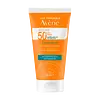What's inside
What's inside
 Key Ingredients
Key Ingredients

 Benefits
Benefits

 Concerns
Concerns

 Ingredients Side-by-side
Ingredients Side-by-side

Water
Skin ConditioningC12-15 Alkyl Benzoate
AntimicrobialDiethylamino Hydroxybenzoyl Hexyl Benzoate
UV FilterEthylhexyl Triazone
UV AbsorberOryza Sativa Starch
AbsorbentPhenylene Bis-Diphenyltriazine
StabilisingGlycerin
HumectantBis-Ethylhexyloxyphenol Methoxyphenyl Triazine
Skin ConditioningPotassium Cetyl Phosphate
EmulsifyingGlyceryl Laurate
EmollientGlyceryl Stearate
EmollientStearyl Alcohol
EmollientTapioca Starch
Vp/Eicosene Copolymer
Benzoic Acid
MaskingCaprylic/Capric Triglyceride
MaskingCaprylyl Glycol
EmollientParfum
MaskingGlyceryl Behenate
EmollientGlyceryl Dibehenate
EmollientPPG-1-PEG-9 Lauryl Glycol Ether
EmulsifyingCI 17200
Cosmetic ColorantTocopheryl Glucoside
EmollientTribehenin
EmollientXanthan Gum
EmulsifyingZinc Gluconate
Skin ConditioningWater, C12-15 Alkyl Benzoate, Diethylamino Hydroxybenzoyl Hexyl Benzoate, Ethylhexyl Triazone, Oryza Sativa Starch, Phenylene Bis-Diphenyltriazine, Glycerin, Bis-Ethylhexyloxyphenol Methoxyphenyl Triazine, Potassium Cetyl Phosphate, Glyceryl Laurate, Glyceryl Stearate, Stearyl Alcohol, Tapioca Starch, Vp/Eicosene Copolymer, Benzoic Acid, Caprylic/Capric Triglyceride, Caprylyl Glycol, Parfum, Glyceryl Behenate, Glyceryl Dibehenate, PPG-1-PEG-9 Lauryl Glycol Ether, CI 17200, Tocopheryl Glucoside, Tribehenin, Xanthan Gum, Zinc Gluconate
Octocrylene 10%
UV AbsorberMethylene Bis-Benzotriazolyl Tetramethylbutylphenol 6%
UV FilterButyl Methoxydibenzoylmethane 5%
UV AbsorberBis-Ethylhexyloxyphenol Methoxyphenyl Triazine 2.5%
Skin ConditioningWater
Skin ConditioningDicaprylyl Carbonate
EmollientCyclopentasiloxane
EmollientC20-22 Alkyl Phosphate
EmulsifyingGlyceryl Stearate
EmollientPEG-100 Stearate
C20-22 Alcohols
Emulsion StabilisingDecyl Glucoside
CleansingCyclohexasiloxane
EmollientPentylene Glycol
Skin ConditioningHydroxyethyl Acrylate/Sodium Acryloyldimethyl Taurate Copolymer
Emulsion StabilisingPhenoxyethanol
PreservativeXanthan Gum
EmulsifyingChlorphenesin
AntimicrobialDisodium EDTA
Sodium Hydroxide
BufferingPropylene Glycol
HumectantCitric Acid
BufferingMannitol
HumectantEctoin
Skin ConditioningFructooligosaccharides
HumectantXylitol
HumectantCaprylic/Capric Triglyceride
MaskingRhamnose
HumectantLaminaria Ochroleuca Extract
Skin ConditioningOctocrylene 10%, Methylene Bis-Benzotriazolyl Tetramethylbutylphenol 6%, Butyl Methoxydibenzoylmethane 5%, Bis-Ethylhexyloxyphenol Methoxyphenyl Triazine 2.5%, Water, Dicaprylyl Carbonate, Cyclopentasiloxane, C20-22 Alkyl Phosphate, Glyceryl Stearate, PEG-100 Stearate, C20-22 Alcohols, Decyl Glucoside, Cyclohexasiloxane, Pentylene Glycol, Hydroxyethyl Acrylate/Sodium Acryloyldimethyl Taurate Copolymer, Phenoxyethanol, Xanthan Gum, Chlorphenesin, Disodium EDTA, Sodium Hydroxide, Propylene Glycol, Citric Acid, Mannitol, Ectoin, Fructooligosaccharides, Xylitol, Caprylic/Capric Triglyceride, Rhamnose, Laminaria Ochroleuca Extract
 Reviews
Reviews

Ingredients Explained
These ingredients are found in both products.
Ingredients higher up in an ingredient list are typically present in a larger amount.
You might know this ingredient as Tinosorb S or Bemotrizinol. It is a UV filter that covers both UVA and UVB rays.
This ingredient has two peak UV absorption peaks ( 310 and 340 nm) and is able to absorb both UV-A and UV-B rays. This ingredient works by preventing UV rays from reaching and damaging your skin.
On top of that - it is highly photostable and helps prevent the photodegration of other sunscreen ingredients such as avobenzone.
Tinosorb S is allowed in the EU, Australia, and Asia. It is close to being approved by the FDA and we'll hopefully get this ingredient in the U.S. by late 2025.
Fun fact: Tinosorb S is the most effective UV absorber at maximum concentration (measured by SPF) permitted in the EU.
This ingredient is oil-soluble, so your oil-cleansers will take this right off at night.
Learn more about Bis-Ethylhexyloxyphenol Methoxyphenyl TriazineThis ingredient is an emollient, solvent, and texture enhancer. It is considered a skin-softener by helping the skin prevent moisture loss.
It helps thicken a product's formula and makes it easier to spread by dissolving clumping compounds.
Caprylic Triglyceride is made by combining glycerin with coconut oil, forming a clear liquid.
While there is an assumption Caprylic Triglyceride can clog pores due to it being derived from coconut oil, there is no research supporting this.
Learn more about Caprylic/Capric TriglycerideGlyceryl Stearate is a mix of glycerin and stearic acid.
It is used to stabilize the mixing of water and oil ingredients. By preventing these ingredients from separating, it can help elongate shelf life. It can also help thicken the product's texture.
As an emollient, it helps soften skin and supports barrier-replenishing ingredients.
In cosmetics, Glyceryl Stearate is often made from vegetable oils or synthetically produced.
This ingredient may not be fungal-acne safe
Fun fact: The human body also creates Glyceryl Stearate naturally.
Learn more about Glyceryl StearateWater. It's the most common cosmetic ingredient of all. You'll usually see it at the top of ingredient lists, meaning that it makes up the largest part of the product.
So why is it so popular? Water most often acts as a solvent - this means that it helps dissolve other ingredients into the formulation.
You'll also recognize water as that liquid we all need to stay alive. If you see this, drink a glass of water. Stay hydrated!
Learn more about WaterXanthan gum is used as a stabilizer and thickener within cosmetic products. It helps give products a sticky, thick feeling - preventing them from being too runny.
On the technical side of things, xanthan gum is a polysaccharide - a combination consisting of multiple sugar molecules bonded together.
Xanthan gum is a pretty common and great ingredient. It is a natural, non-toxic, non-irritating ingredient that is also commonly used in food products.
Learn more about Xanthan Gum